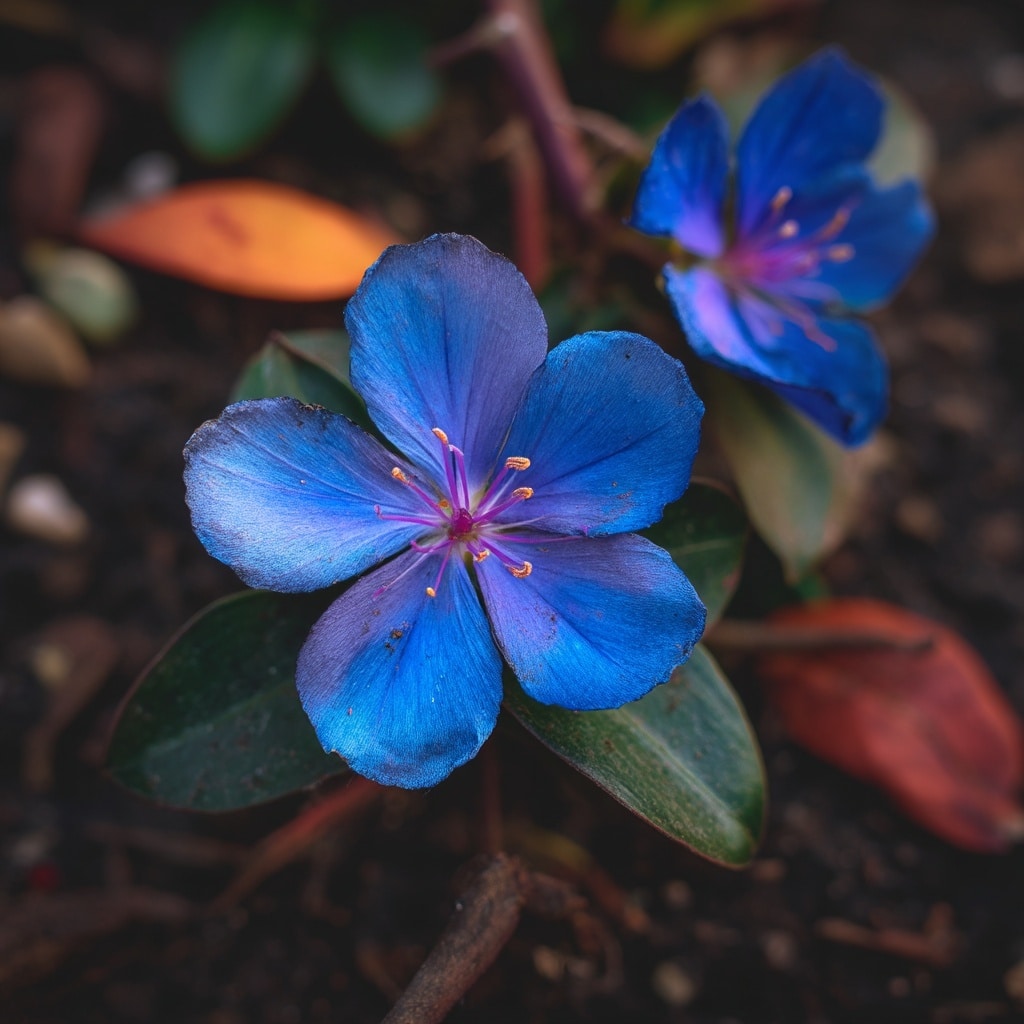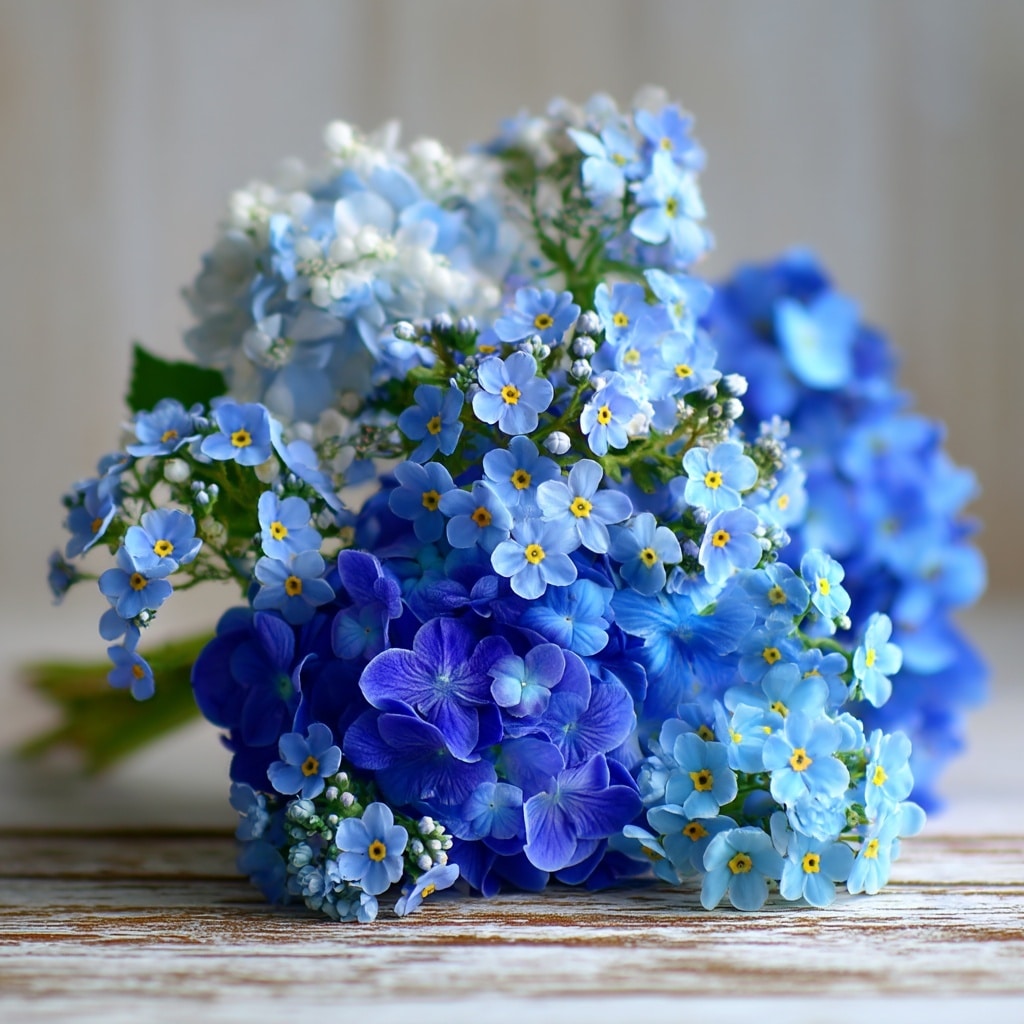Blue flowers bring a sense of peace and elegance to any garden or bouquet. Their rare and soothing hues have long captured the hearts of gardeners and florists alike. Whether you’re designing a calming outdoor space or searching for the perfect bloom to brighten someone’s day, these floral beauties offer a rich variety of shapes, sizes, and seasonal favorites.
In this guide, you’ll discover the natural appeal of blue flowers, what they represent, and how to grow or enjoy them through the seasons. From springtime forget-me-nots to the bold blue spikes of summer delphiniums, there’s a blue bloom for every time of year.
Table of Contents
Blue Flower Meanings
Blue flowers are often tied to feelings of serenity, trust, and calm—qualities that make them a thoughtful choice for expressing peace, sympathy, or deep affection. In floral symbolism, they’re often seen as a sign of hope and tranquility, making them perfect for moments when words aren’t quite enough.
They’re also a romantic favorite in wedding arrangements, thanks to the old tradition of including “something blue” for good luck. While some florists may dye white blooms to achieve the desired hue, many natural blue flowers—like hydrangeas or forget-me-nots—offer a more organic, timeless look.
Whether you’re creating a bouquet for a friend going through a tough time or planning a centerpiece for your big day, blue flowers carry messages that are both heartfelt and elegant.
Blue Flower FAQs & Fun Facts
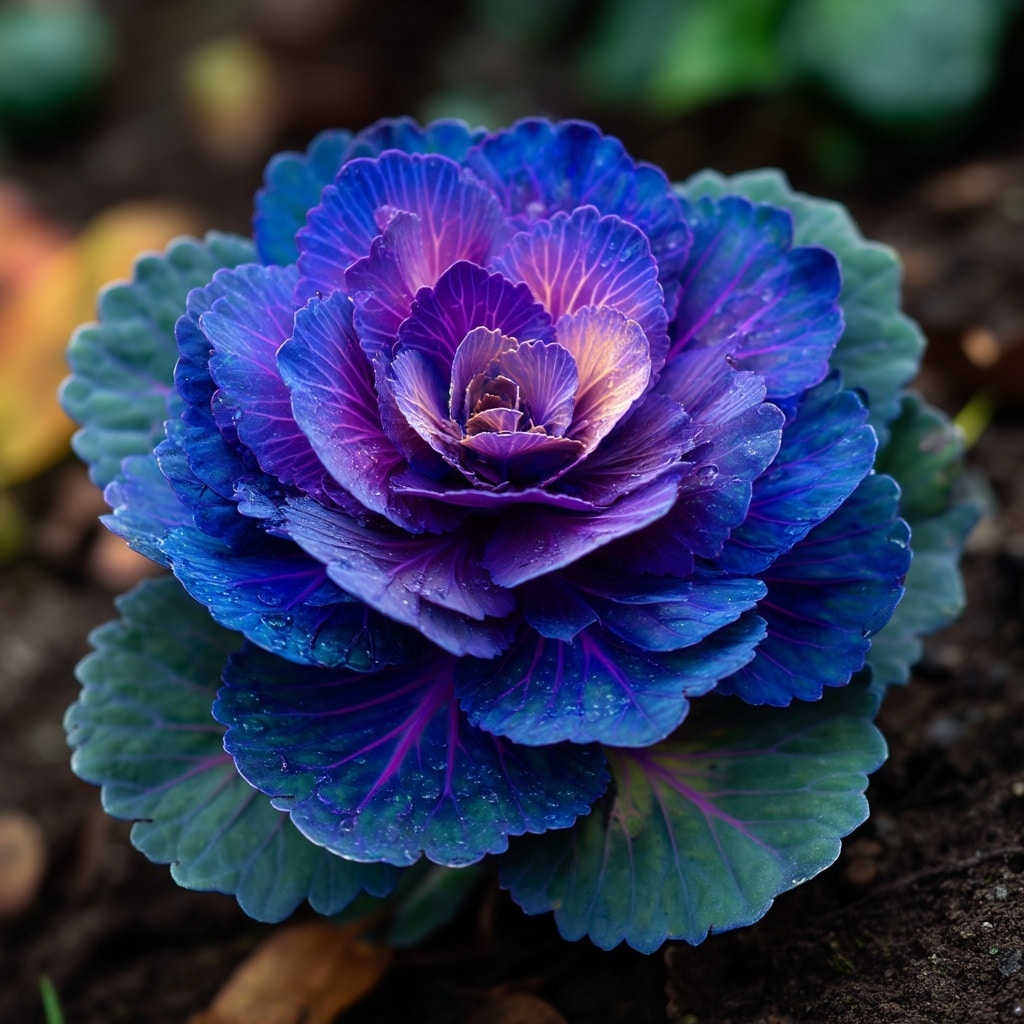
Are there really no true blue flowers?
Surprisingly, true blue flowers don’t exist in nature. Plants lack a blue pigment, so what appears blue is often a clever mix of red and purple tones, manipulated by plant chemistry. That’s why many “blue” blooms—like morning glories or some irises—lean toward violet or bluish-purple. To achieve a vibrant blue, florists sometimes use dye to enhance or alter a flower’s color.
Why do hydrangeas turn blue?
One of the most well-known color-changing flowers, hydrangeas reflect the pH of the soil they’re planted in. Acidic soil (low pH) results in blue or purple flowers, while alkaline soil (high pH) produces pink or red. Think of them as a living pH test—gardeners can even adjust soil conditions to influence the bloom color.
Did you know over half the world’s bluebells grow in the UK?
In spring, British woodlands burst into color with sweeping carpets of bluebells—one of the most iconic blue flowers in the world. The UK is home to over 50% of the global bluebell population, making it a truly special place for these delicate blooms. They’re also protected by law, so leave them in the wild where they belong!
Blue Flowers by Season
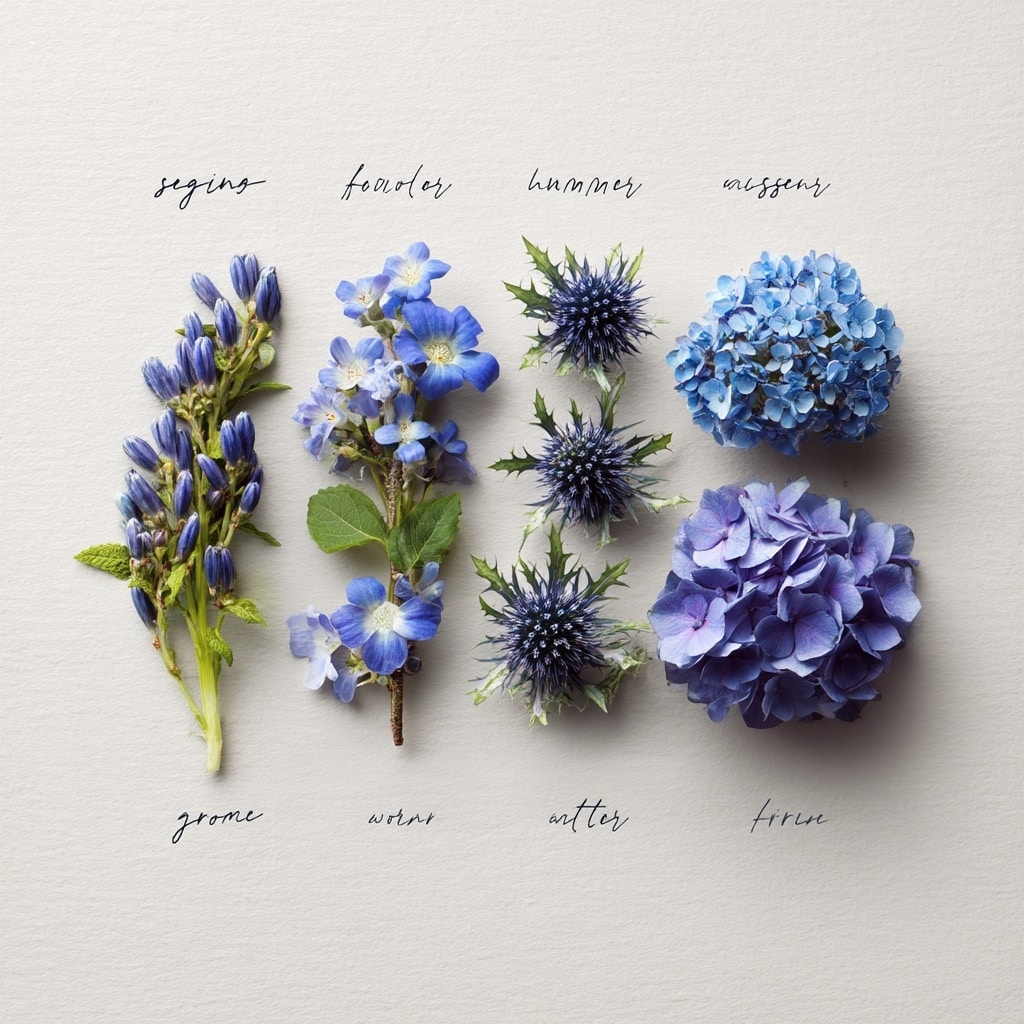
Blue flowers can bloom in every season—if you know where to look. From the first signs of spring to the chill of winter, these seasonal stars add calm color and interest to gardens and floral arrangements alike.
Spring
Spring offers a wide variety of natural blue blooms. Many of these early risers are compact, fragrant, and perfect for borders or bouquets.
- Hyacinths – Fragrant and tightly packed petals in pale or rich blue shades
- Grape Hyacinths (Muscari) – Small, bell-shaped clusters perfect for ground cover
- Wild Blue Phlox – A delicate, spreading flower ideal for woodland gardens
- Forget-me-nots – Tiny, bright blue blooms with soft, furry leaves
- Irises – Regal, upright flowers in deep violet-blue hues
- African Lily (Agapanthus) – Sky-blue clusters on tall stems
Summer
Summer brings vibrant, sun-loving blue flowers that often stand tall and add height and drama to beds or bouquets.
- Hydrangeas – Puffy heads in pale to deep blues, thriving in acidic soil
- Delphiniums – Towering spires of blue, great for borders
- Gentians – Vivid blue trumpet-like flowers, striking in alpine gardens
- Sea Holly (Eryngium) – Thistle-like blooms with spiny blue cones
- Allium – Round, sculptural blooms that attract pollinators
- Wild Blue Indigo – Deeply pigmented and lush in garden beds
- Agapanthus – Repeats from spring into summer with bolder blooms
Autumn & Winter
While less common in colder months, some blue flowers still make an appearance when the garden needs color most.
- Asters – Daisy-like flowers that bring soft blues to fall gardens
- Bog Sage – Despite its name, it produces striking blue blooms
- Irises – Some varieties bloom again in late winter
- Sea Holly – Stays resilient and eye-catching even in colder conditions
Types of Blue Flowers
From delicate ground covers to towering blooms, blue flowers come in a wide range of shapes and personalities. Here are some of the most loved and garden-worthy varieties to consider for your beds, borders, or bouquets.
Anemone (Windflower)
- Season: Spring
- Description: Saucer-shaped blooms with five or more silky petals, often in violet-blue shades
- Fun Fact: The name “Anemone” comes from the Greek word for wind, as the blooms appear wind-blown
- Florist Tip: Cut stems at an angle and place in cold water to help them last longer in a vase
Bluebell (Hyacinthoides non-scripta)
- Season: Spring
- Description: Iconic woodland flower with arching stems and bell-shaped blue-violet blooms
- Fun Fact: Over half the world’s bluebells are found in the UK
- Florist Tip: Best enjoyed in the wild or garden—not suited for cutting as they wilt quickly
Hyacinth (Hyacinthus)
- Season: Spring
- Description: Tightly packed, urn-shaped flowers with a strong, sweet scent
- Fun Fact: Related to asparagus! They’re both in the same plant family
- Florist Tip: Great as potted bulbs—perfect for indoor spring color
Forget-Me-Not (Myosotis)
- Season: Spring to early summer
- Description: Small, five-petaled sky-blue flowers with yellow centers
- Fun Fact: Historically known as “scorpion grass” due to the curved shape of its flower stems
- Florist Tip: Adds a delicate, nostalgic touch to hand-tied bouquets
Balloon Flower (Platycodon grandiflorus)
- Season: Summer
- Description: Unique blooms that swell like a balloon before opening
- Fun Fact: The “balloon” effect makes it a favorite among kids and flower lovers
- Florist Tip: Replace water frequently to prevent cloudy sap buildup
Allium (Ornamental Onion)
- Season: Late summer to early autumn
- Description: Globe-shaped clusters of small blue or purple flowers
- Fun Fact: Some allium heads can grow up to 15 cm wide
- Florist Tip: Looks stunning dried for modern, sculptural arrangements
Agapanthus (African Lily)
- Season: Late spring through summer
- Description: Funnel-shaped sky-blue flowers on tall, sturdy stems
- Fun Fact: Despite the name, many species are native to South America
- Florist Tip: Excellent for adding height and fullness to garden beds
Campanula (Canterbury Bells)
- Season: Late spring to early summer
- Description: Showy, bell-shaped flowers in soft, cool blue tones
- Fun Fact: Name derives from Latin “campana” meaning bell
- Florist Tip: These charming blooms thrive in containers and cottage gardens
Nigella (Love-in-a-Mist)
- Season: Spring and early summer
- Description: Soft, spiky petals surround a puffy seed pod
- Fun Fact: Nigella seeds are used in Indian cooking (including naan!)
- Florist Tip: Dry the seed heads to add structure to autumn bouquets
Lavender (Lavandula)
- Season: Summer
- Description: Aromatic spikes of violet-blue flowers used in perfumes and oils
- Fun Fact: Egyptians used lavender in the mummification process
- Florist Tip: Dry a bunch and hang it in the bathroom for a natural air freshener
Hydrangea (Hydrangea macrophylla)
- Season: Summer
- Description: Fluffy, cloud-like blooms that change color based on soil pH
- Fun Fact: Blue hydrangeas form in acidic soil—a true garden chemistry trick
- Florist Tip: Great for large bouquets or dramatic garden borders
Final Thoughts on Blue Flowers
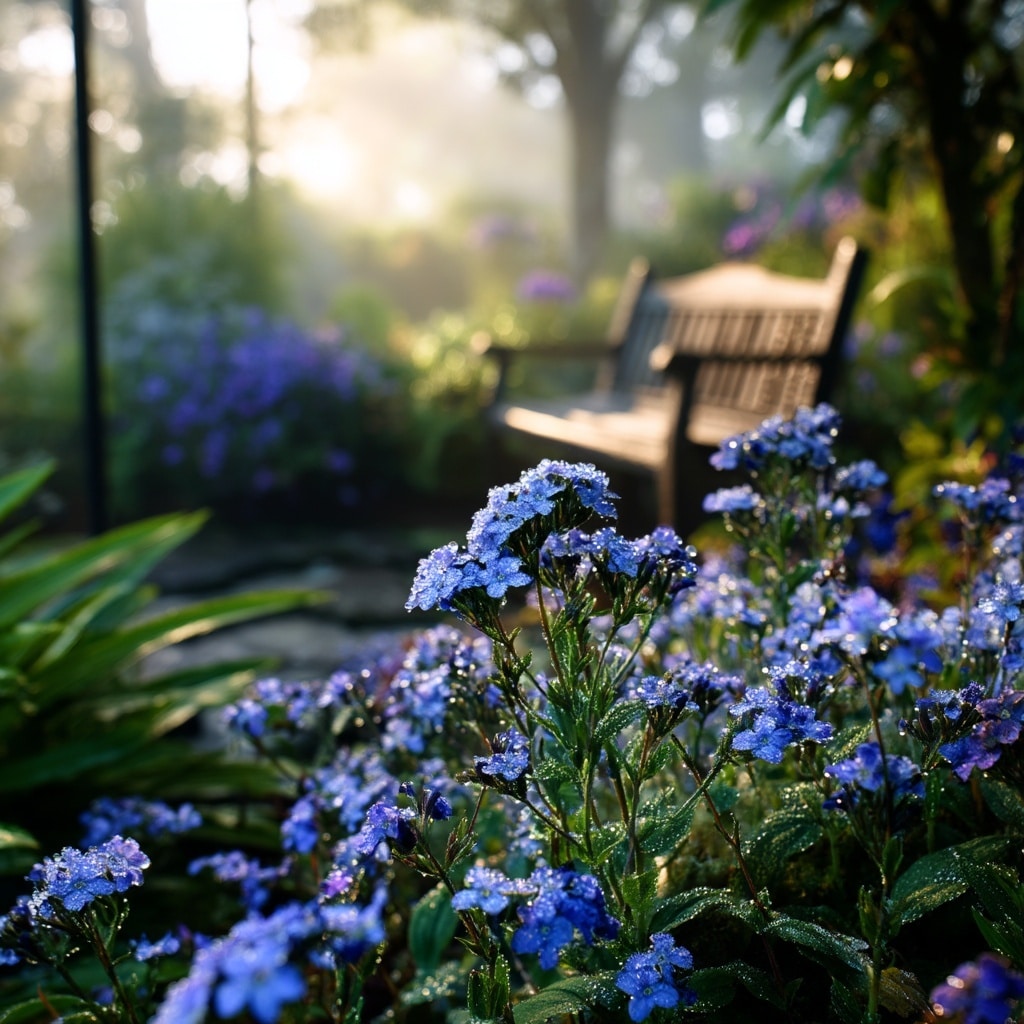
Blue flowers have a unique charm that sets them apart from the more common reds, yellows, and whites. Whether you’re planting a peaceful garden retreat or building a meaningful bouquet, these blooms offer beauty, symbolism, and a calming presence in every season.
From early spring forget-me-nots to summer’s showstopping hydrangeas, there’s a blue flower to suit every space and sentiment. With so many varieties to choose from—and a few fun surprises along the way—blue flowers continue to inspire gardeners, florists, and flower lovers around the world.

